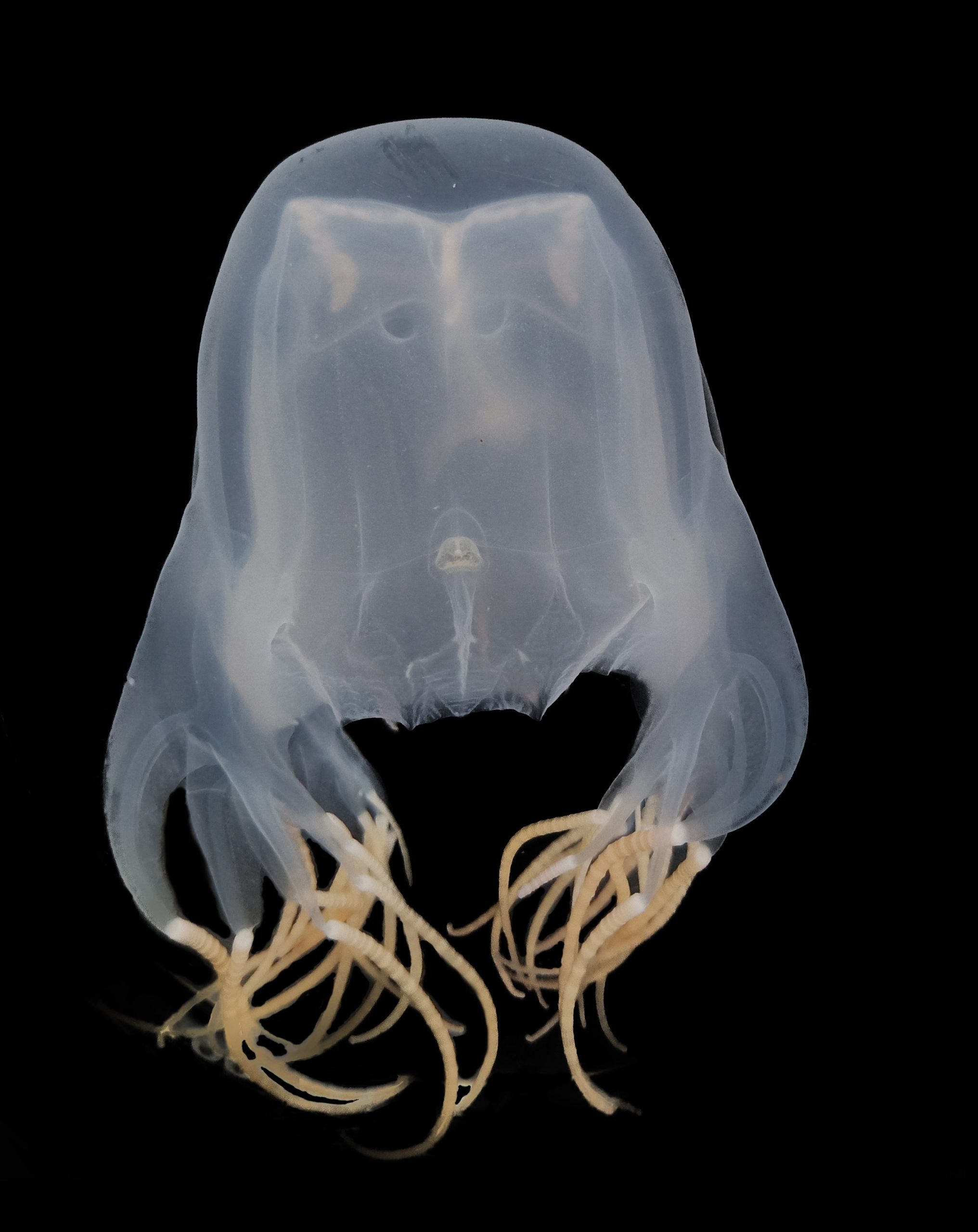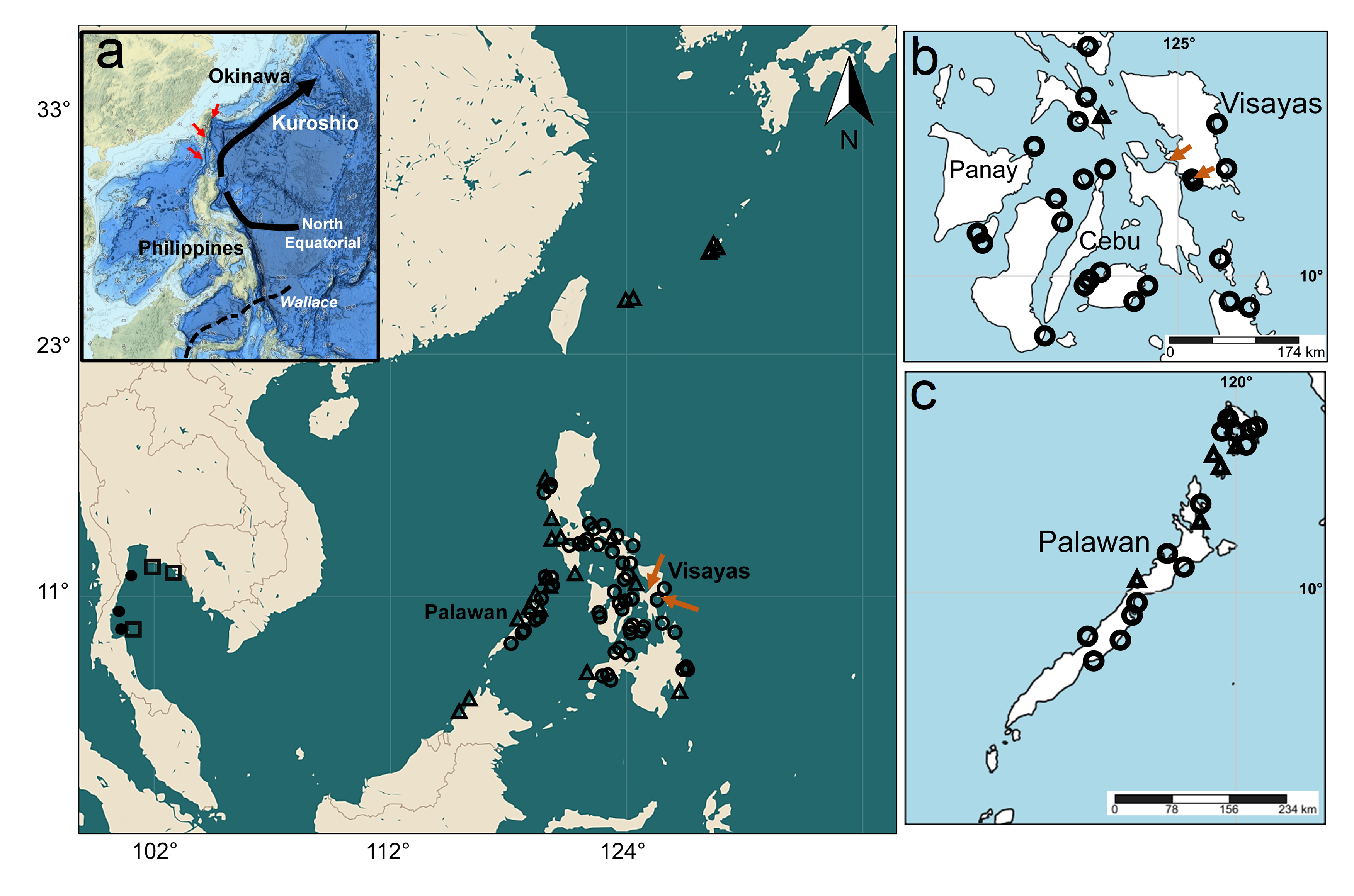Venomous Jellyfish Found in PH Waters, Biologists Confirm
Published: February 21, 2025
By: Eunice Jean C. Patron
Box jellyfishes are known for their distinctive box-like appearance and their potent venom, which can cause severe stings and fatalities. In the Philippines, many coastal communities are well aware of the dangers posed by box jellyfishes, but Filipino scientists noted that the government does not have a systematic plan to address this issue.

Based on previous studies by marine researchers, a team of biologists hypothesized that Chironex yamaguchii, a dangerous species of box jellyfish known from Japan, is also present in Philippine waters. This box jellyfish was found to cause severe stings and even fatalities in the Indo-Pacific and Western Pacific regions. Their tentacles can inflict extreme pain, cause skin injuries with welts, and even trigger heart attacks and death.
By closely examining the physical characteristics and DNA of this deadly jellyfish, the team found strong evidence that the species exists in the Coral Triangle, a marine biodiversity hotspot that includes the Philippines. Despite their nearly identical physical characteristics, the scientists discovered small genetic differences between the Philippine and Japanese C. yamaguchii, suggesting that the Philippine C. yamaguchii may be a separate species requiring further research.
The international research team was composed of Dr. Sheldon Rey Boco, Christine Gloria Grace Capidos and Dennis Talacay of The Philippine Jellyfish Stings Project together with Raffy Jay Fornillos and Dr. Ian Kendrich Fontanilla of the University of the Philippines – Diliman College of Science’s Institute of Biology, Dr. Phuping Sucharitakul and Dr. Jonathan Lawley of Griffith University’s School of Environment and Science in Queensland, Australia; Dr. Allen Collins of Smithsonian National Museum of Natural History in Washington, DC; Joseph Elliz Comendador of National Museum of Natural History of the National Museum of the Philippines; and Facundo Rey Ladiao of Leyte Normal University.
“This study shows genetic differences within C. yamaguchii that we couldn’t see just by looking at them as physical specimens,” the researchers explained. “This finding highlights how important it is to use molecular methods to correctly identify species and understand their genetic variety.”
The study’s findings exceeded the team’s expectations, particularly regarding their hypothesis on the species’ presence in the Philippines. “We identified the Philippine population as a potential cryptic species. This means that we are being encouraged to determine if they belong to a new species or if their geographic isolation doesn’t make them entirely distinct from the Japanese population,” the researchers said.
The team added that the citizens and tourists of the coastal communities they visited played a significant role in the research. Their images and videos of box jellyfishes, as well as their traditional knowledge of the marine environment, helped confirm that C. yamaguchii is widespread in Philippine waters. “Their insights and experiences have helped us identify and confirm the presence of the box jellyfish in areas that might otherwise be overlooked. This collaboration between scientists and Filipinos or tourists (“the citizens”) highlights the importance of community involvement in scientific research,” they shared.
“Knowing the genetic diversity and distribution of C. yamaguchii helps in correctly identifying the jellyfish responsible for stings, which is crucial for effective treatment and management,” the biologists added. “Understanding the presence of jellyfish populations in various regions can also help assess the risk of jellyfish stings in those areas, which can protect local communities and tourists.”

The researchers mentioned that the study’s results can also impact healthcare workers, policymakers, and the general public. With better knowledge of the jellyfish’s distribution and genetics, healthcare providers will be better equipped to treat sting cases. Policymakers can implement regulations and guidelines for beach safety, including monitoring and managing jellyfish populations to reduce the risk of stings. Raising awareness of the presence and dangers of C. yamaguchii can lead to better preventive measures, such as avoiding certain areas during peak jellyfish seasons and using protective gear.
Their research, titled “Molecular signatures reveal intra-species divergence, undetectable by traditional morphology, in the deadly box jellyfish, Chironex yamaguchii (Cubozoa; Chirodropidae) of Western Pacific,” was published in Regional Studies in Marine Science, an international journal that features scientifically rigorous studies on maritime and marine resources, including estuaries, coastal zones, continental shelves, seas, and oceans. The research was partially funded by UPD, with open-access funding provided by Griffith University, and was also partly supported by citizen-science participants of the Philippine Jellyfish Stings Project.
References:
Boco, S. R., Capidos, C. G., Fornillos, R. J., Sucharitakul, P., Lawley, J. W., Talacay, D., Collins, A. G., Fontanilla, I. K., Comendador, J. E., & Ladiao, F. R. (2025). Molecular signatures reveal intra-species divergence, undetectable by traditional morphology, in the deadly box jellyfish, Chironex yamaguchii (Cubozoa; Chirodropidae) of western Pacific. Regional Studies in Marine Science, 82, 104033. https://doi.org/10.1016/j.rsma.2025.104033
Verdadero, F. X., Licuanan, W., Ang, J. L., De los Santos Jr, B., & Metillo, E. (2022). Harmful jellyfishes are manageable. The Philippine Journal of Fisheries, 209-216. https://doi.org/10.31398/tpjf/29.2.2021-0032
For interview requests and other concerns, please contact media@science.upd.edu.ph.
